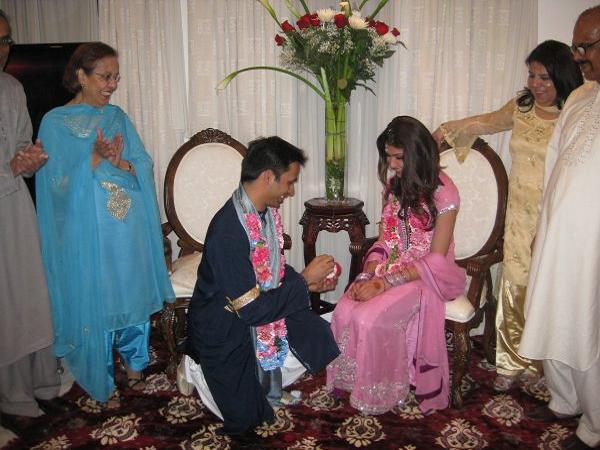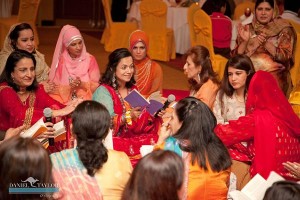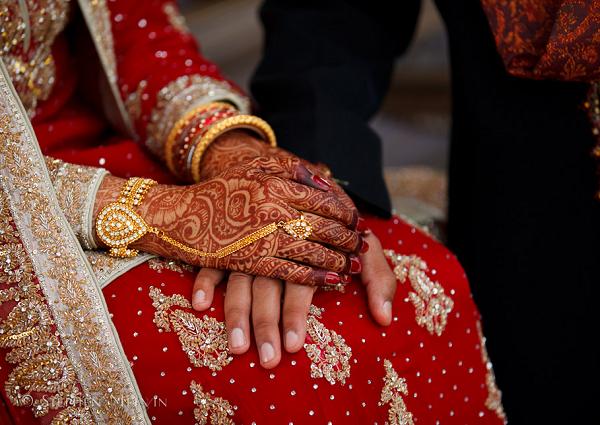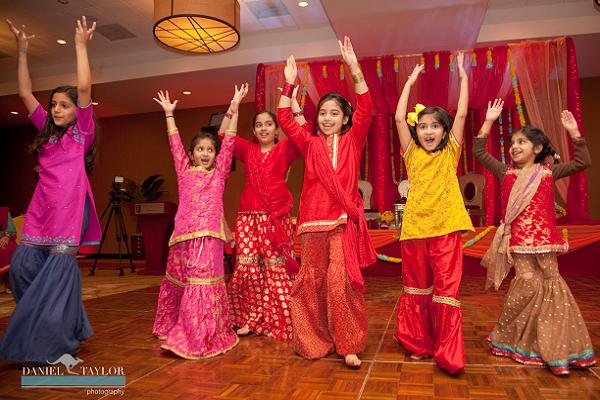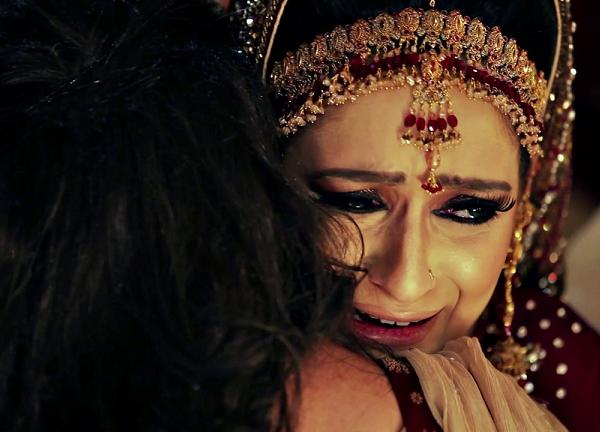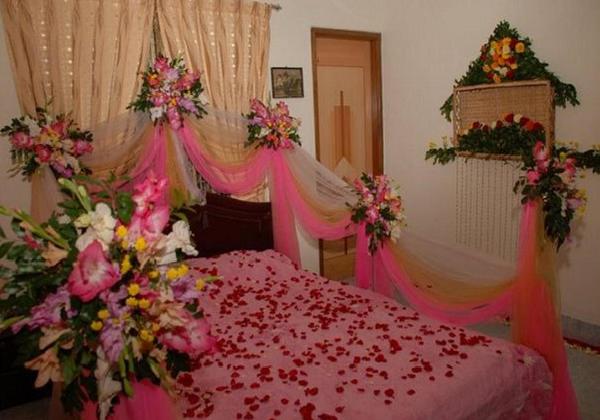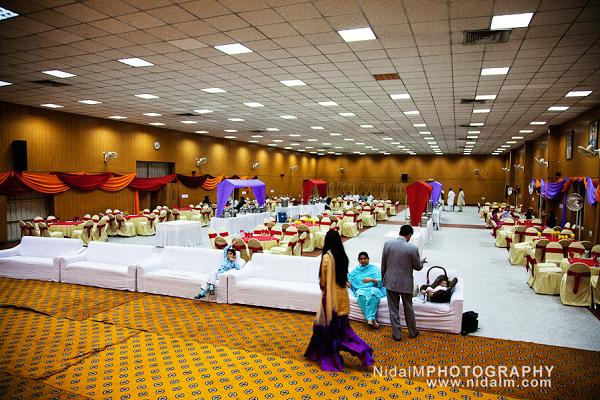
There is a variety of interesting and warm wedding traditions that are found in different parts of the world. Wedding customs of any country purely depend upon the culture and of course, the religion which is the most essential factor of any wedding ceremony. ‘Shadi’, which is popularly used in Middle Eastern countries, is usually conducted to bring two people closer- a male or female, two families, two towns, two villages or even two countries.
image Src: http://aweddingpictures.blogspot.com.au/
Pakistan is an Islamic State and is highly rich in cultural values and traditions. Although, most Pakistani weddings follow certain Islamic traditions strictly, there are tons of enthralling and exciting customs that are observed during the event. The main aim of a Pakistani wedding is to develop a legal union between a man and woman and as a Muslim it is the foremost duty of all parents to marry their sons and daughters as soon as they become mature. This way, their children will remain away from committing any kind of sin.
Pakistani Marriages is a unique blend of Hindu and Islamic traditions, as Muslims and Hindus lived together for many years before the partition of Pakistan, in 1947. Undoubtedly, Pakistan possesses a remarkable civilization with great quantities of gilded treasure. In Pakistan, the entire wedding occasion is filled with extra-ordinary fun, merriments and celebrations.
Read also : http://easyday.snydle.com/muslim-wedding-traditions.html
Customs and Traditions in Pakistani Weddings:
A traditional Pakistani wedding occur over 5 to 7 major events, which can take place over 7-8 days in a row, but generally are spread over few weeks, months or even years. Let’s take a look at some cheerful wedding events:
Marriage Process in Pakistan:
Normally, arranged marriages take place in Pakistan that often consume long periods of time to finalize. The time from preparations till the wedding day may take more than a year. When the wedding dates are near, people usually invite all their close relatives and friends that require significant budget to accommodate all the expenses. Different people perform different types of rituals and customs, depending upon their geographical location, beliefs and caste. However, a typical Pakistani Marriage is purely based on three grand functions- Rasm-e-Hennah, Nikah, and the Reception (Valimah).
- 1. Engagement (Maniyaan)- Post Acceptance of Proposal
This event usually occurs when bride’s parents approve and accept the wedding proposal. This event could either be a prolific function or a small family gathering. Basically, it involves the exchange of rings and gifts which symbolizes the acceptance of proposal and impeding marriage.
2. Dholki:
This event is the most exciting part of Pakistani weddings. It is actually derived from the percussion instrument ‘Dholki’, which is a must-to-have feature of wedding celebrations and occur many days or even weeks before the actual wedding day. Usually, girls and women gather in the house of bride or groom and sing songs and dance while accompanied by musical instruments- like ‘Duffli’, ‘Dhool’, and ‘Dandiyaan’.
images at :http://www.danieltaylorphotoblog.com/
Dholki Celebration
Pakistani Women Celebrate dholki ceremony with dance and music
3. Mehendi or Mayun Ceremony:
Mehendi is usually conducted two or three days before the actual wedding day. During this pleasant occasion, close relatives and friends gather at bride’s home and apply traditional Mehendi or Henna on her hands and feet. In conventional weddings, only female members of both the families can join in the fun. But the trend has changed; lavish Mehendi functions are organized at the wedding hall or hotel, in which both females and males take part in the celebrations. Usually, the bride wears yellow outfit along with ‘Gajras’, while the groom wears white or green kurta.
Read More at : http://easyday.snydle.com/bridal-mehndi-designs.html
Pakistani Bridal Mehndi designs
Mayun Ceremony Celebration
4.Nikah Ceremony- the actual wedding day:
This is the most virtuous occasion in the entire marriage process, in which a man takes a woman in his Nikah and accepts as his soul mate in the presence of Almighty Allah. In Nikah ceremony, bride usually wears a beautiful red dress with her head covered and along with lots of Gold jewelry so she can stand-out from the rest. Conversely, the groom wears ‘Sherwaani’, along with a Sehra on his head, which is usually adorned with flowers.
The procession travels towards the house of the bride, which is popularly known as ‘Baraat’ and is highly featured with drums and ‘Shenaai’. Nikah takes place when the Nikad-Namma, which is a legal marriage document, is finally registered. There are many important terms and conditions written in the document, regarding the rights of a woman to divorce and monetary that her husband will provide her. The presence of Walis and Witnesses is a must, where fathers of the bride and groom serve as Walis. Certain verses are translated by the Priest, after which the bride and groom accepts all the terms and conditions, by saying “Qabool Hai” and the wedding is announced. Delicious Dinner is then served by bride’s family to cherish and celebrate this righteous occasion.
Guests celebrating the Nikah
5. Rukhsati:
This ceremony is usually followed by Nikah and the Dinner, when the bride leaves her father’s home together with the groom and his family. The Holy Quran is held over her head, as she walks from the stage to the exit, so she can start her new life with countless blessings.
6. Shab-e-Zifaf- Couple’s First Night:
Normally, the bedroom of a newlywed couple is beautifully adorned with flowers and bouquets. Traditionally, the bed has to be filled with lots of rose petals to make their first night pleasant and memorable. It is customary for the husband to present her wife a small token of love, which could be a ring, necklace or any other piece of jewelry.
Chautti– it is another affectionate ritual usually performed by bride’s brothers. It is customary to bring her back to her father’s home the next day or on the fourth day after the wedding. The bride then stays at her parents place for quite some time depending on her family’s customs.
7. Valimah- The Reception:
Valimah is usually organized by Groom’s family. All friends, relatives and especially bride’s family members are invited to attend the event. It is often considered as the ‘Wedding Feast’. In most Pakistani Valimah ceremonies, bride and groom cut the cake, which is then served among the guests.
It is a common tradition that couples go for Honey-moon, when all the wedding traditions are accomplished. Muree and Nathia Gali are the most popular spots for many couples in Pakistan.
Food in Pakistani Weddings:
Food is the most essential and dominant element in any Pakistani Wedding. It is usually served right after the Nikah ceremony and in the Reception as well. You will find a wide variety of dishes in a wedding, including Biryani, Kebabs, Fried Chicken, Korma and much more. Most popular sweet dishes are Gulab Jamun, Pudding, Custards, Fruit Trifle, Kheer, Gajar ka Halwa and so on. Nowadays, cuisines from China and Europe are also included in several weddings. Normally people prefer “shaadi halls” for the entire arrangement of the big functions rather than their homes, as the caterers and other food arrangements are done properly there, plus halls are spacious enough to accommodate hundreds of people.
All these beautiful Wedding traditions and customs are the greatest source of bringing people, families and even societies closer. If you want to explore some fun and exciting customs of a traditional wedding, then you must attend a Pakistani Marriage ceremony, where true values and beliefs are being practiced.
image:http://nidalm.com
Pakistani Wedding Ceremony in Youtube






